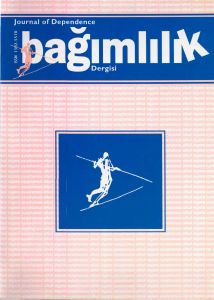Carbon monoxide levels in the expired air of smokers
Keywords:
Carbon monoxide, smokers, nonsmokersAbstract
Objective: There are a variety of independent methods of estimating smoking status. The measurement of carbon monoxide in the expired air has proven to be a reliable and convenient method. The purpose of this study is to determine the optimal breath carbon monoxide concentration cut-off level to distinguish actual smokers from nonsmokers.
Method: A hand held breath analyzer (Micro CO) was used to measure expired-air carbon-monoxide concentrations. Breath carbon monoxide levels were measured in 31 smokers and 30 nonsmokers.
Results: The range of carbon monoxide concentrations obtained was 0-5 parts per million (ppm) in the non-smoking group and 5-70 ppm in the smoking group. Smokers had a mean breath carbon monoxide concentration of 27.8 + 17.0 ppm and non-smokers had a mean of 1.7 +1.0 ppm (p<0.01). Mean breath carbon monoxide concentrations increased in direct proportion to the number of cigarettes smoked (p<0.01). The optimal cut-off level of breath carbon monoxide to discriminate between actual smokers and nonsmokers was 5 ppm with 96.8 % sensitivity and 96.7 % specifity.
Conclusion: Breath carbon monoxide concentration provides an easy, noninvasive, and immediate way of assessing a patient’s smoking status. Micro CO analyzer is a portable and practical analyzer for measuring expired-air carbon monoxide. A reading > 5 ppm strongly suggests that a person is a smoker.
References
Wald NJ, Idle M, Boreham J, Bailey A. Carbon monoxide in breath in relation to smoking and carboxyhaemoglobin levels. Thorax. 1981; 36: 366-369.
Stitzer ML, Bigelow GE. Contingent reinforcement for carbon monoxide reduction: within-subject effects of pay amount. J Appl Behav Anal. 1984; 17: 477-483. Terao A, Konishi M, Baba S, Mannami T. Exposure to tobacco smoke in a Japanese urban population. An analysis using biochemical markers of smoking. Nippon Koshu Eisei Zasshi (İngilizce özet) 1998; 45: 3-14.
Middleton ET, Morice AH. Breath carbon monoxide as an indication of smoking habit. Chest 2000;117: 758-763.
Cunnington AJ, Hormbrey P. Breath analysis to detect recent exposure to carbon monoxide. Postgrad Med J. 2002; 78: 233-237.
Solak ZA, Göksel T, Erdinç E, Üstün H. Sigara ile ilişkili ciddi akciğer hastalığı olanların sigara içen yakınlarında sigara bırakma tedavisinin başarısı. Toraks Dergisi. 2002;3(3):248-252.
Solak ZA, Telli CG, Erdinç E. Sigara bırakma tedavisinin sonuçları. Toraks Dergisi. 2003;4
Heatherton TF, Kozlowski LT, Frecker RC, Fa-gerström KO. The Fagerström Test for Nicotine Dependence: A revision of the Fagerström Tolerance Questionnaire. Br J Addict 1991; 86: 1119-1127.
Nakayama T, Yamamoto A, Ichimura T, Yoshiike N, Yokoyama T, Fujimoto EK, Tanaka H. An optimal cutoff point of expired-air carbon monoxide levels for detecting current smoking: in the case of a Japanese male population whose smoking prevalence was sixty percent. J Epidemiol. 1998;8:140-145.
Burling TA, Stitzer ML, Bigelow GE, Mead AM. Smoking topography and carbon monoxide levels in smokers. Addict Behav. 1985;10: 319323.
Cox BD, Whichelow MJ. Carbon monoxide levels in the breath of smokers and nonsmokers: effect of domestic heating systems. J Epidemiol Community Health. 1985; 39:75-78.
Stepney R. Exposure to carbon monoxide in smokers of middle- and low-tar cigarettes. Br J Dis Chest 1982; 76: 390-396.
Sato S, Nishimura K, Koyama H et al. Optimal cutoff level of breath carbon monoxide for assessing smoking status in patients with asthma and COPD. Chest 2003; 124: 1749-1754.
Biernacki WA, Kharitonov SA, Barnes PJ. Exhaled carbon monoxide in patients with lower respiratory tract infection. Respir Med. 2001; 95: 1003-1005.
de Granda-Orive JI, Escobar JA, Gutierrez T et al. Smoking-related attitudes, characteristics, and opinions in a group of young men with asthma. Mil Med. 2001;166: 959-965.
Ott W, Switzer P, Willits N. Carbon monoxide exposures inside an automobile traveling on an urban arterial highway. Air Waste. 1994; 44: 1010-1018.
Irving JM, Clark EC, Crombie IK, Smith WC. Evaluation of a portable measure of expired-air carbon monoxide. Prev Med. 1988; 17: 109-115.
Berlin I, Radzius A, Henningfield JE, Moolc-han ET. Correlates of expired air carbon monoxide: effect of ethnicity and relationship with saliva cotinine and nicotine. Nicotine Tob Res. 2001;3:325-331.
Downloads
Published
Issue
Section
License
Copyright (c) 2025 Journal of Dependence

This work is licensed under a Creative Commons Attribution-NonCommercial-NoDerivatives 4.0 International License.
The Journal and content of this website is licensed under the terms of the Creative Commons Attribution-NonCommercial-NoDerivatives 4.0 International (CC BY-NC-ND 4.0) License. This is in accordance with the Budapest Open Access Initiative (BOAI) definition of open access. The Creative Commons Attribution-NonCommercial-NoDerivatives 4.0 International (CC BY-NC-ND 4.0) allows users to copy, distribute and transmit unmodified article, and make noncommercial use of the article. The CC BY license permits non-commercial re-use of an open access article, as long as the author is properly attributed.

